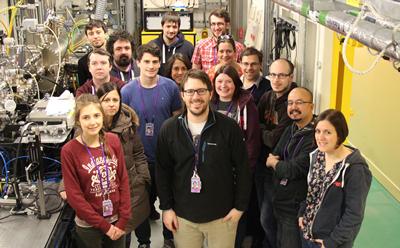Scientists unlock ‘golden’ secret to help boost PVC industry

A University of Southampton scientist has helped unlock the secret of a gold-based catalyst used to produce a key component of polyvinyl chloride (PVC) – the world’s third most widely used plastic.
Dr Peter Wells, lecturer in Inorganic Chemistry, was part of an international group of scientists who examined the production process behind the vinyl chloride monomer (VCM) used to make PVC.
PVC has become an indispensable part of modern life. Its applications include construction pipes, credit cards, window and door frames, plumbing equipment, and electrical cable insulation.
China is the world’s biggest producer of VCM, making 30 million tons a year, and recently replaced the conventional production process, which used a potentially toxic mercury-containing catalyst, with a more environmentally friendly gold-based catalyst.
China is the first country to produce VCM on an industrial scale using this catalyst – but until now it was not fully understood how it worked.
The researchers found that the active catalyst was made up of individual atoms of gold spread out on a carbon surface. The gold also needed to be present in an ionized form – meaning that some of its electrons are missing – in order to convert acetylene, a gas derived from coal, to the VCM molecules that can then be linked to form PVC.
Dr Wells said: “VCM can be prepared a number of different ways. China recently switched to producing it a new way – the first major change to the production process in 50 years – but they didn’t know the precise chemical ‘species’ promoting the reaction.
“What we wanted to do was follow this process and see how the catalyst behaved. We have now shown exactly how the catalyst works, which will allow industry to optimise the process for future benefits.
“There is a drive in catalysis to do more with less – to achieve greater performance using reduced amounts of expensive metal catalysts. Understanding all the chemical steps involved is crucial to achieving this.”
The team – led by researchers from the University of Cardiff – carried out X-ray experiments at Diamond Light Source, the UK national synchrotron, to study the catalyst under working reaction conditions.
A new paper, published in the leading international journal Science, describes their findings.
Scientists from Lehigh University in the USA, University College London and chemicals company Johnson Matthey were also involved in the research.